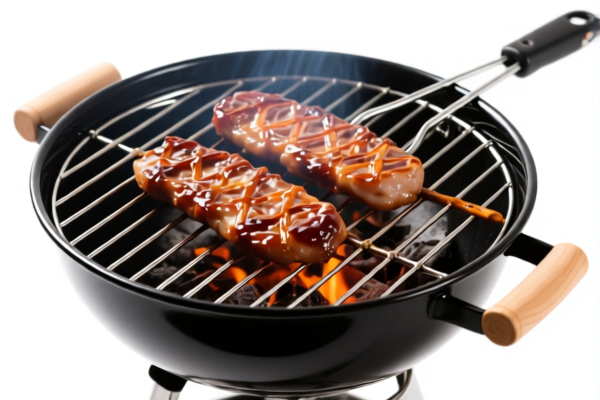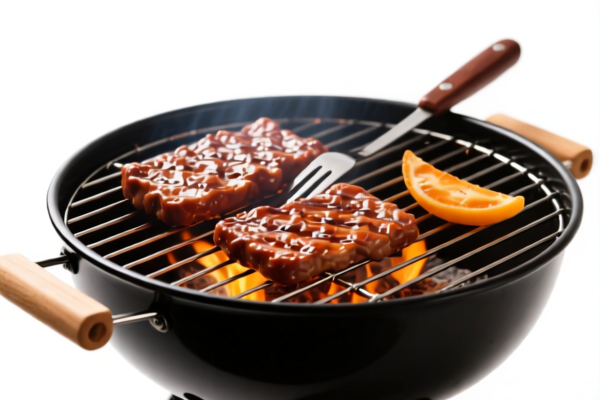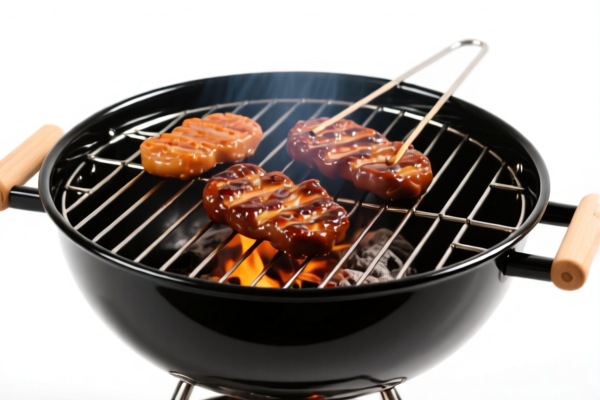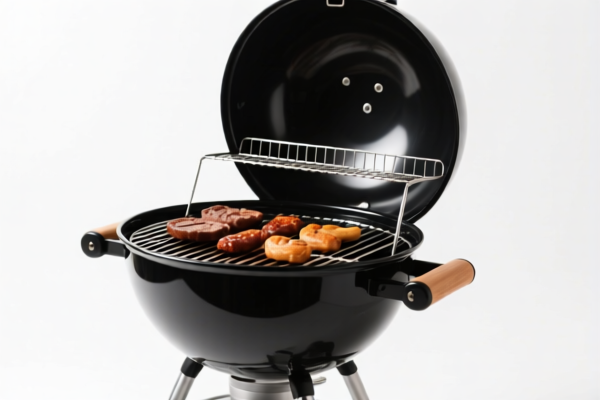| HS Code | Official Doc | Tariff Rate | Origin | Destination | Effective Date |
|---|---|---|---|---|---|
| 8211929030 | Doc | 0.4¢ each + 6.1%+37.5% | CN | US | 2025-05-12 |
| 8211929060 | Doc | 0.4¢ each + 6.1%+37.5% | CN | US | 2025-05-12 |
| 8208906000 | Doc | 55.0% | CN | US | 2025-05-12 |
| 8215992400 | Doc | 0.3¢ each + 4.5%+37.5% | CN | US | 2025-05-12 |
| 8308909000 | Doc | 57.7% | CN | US | 2025-05-12 |
| 8301406060 | Doc | 43.2% | CN | US | 2025-05-12 |
| 7321190040 | Doc | 55.0% | CN | US | 2025-05-12 |
| 7326908688 | Doc | 82.9% | CN | US | 2025-05-12 |
| 7326908688 | Doc | 82.9% | CN | US | 2025-05-12 |




Barbecue Fork
A barbecue fork is a utensil with two or more tines, used to lift, hold, and turn food while barbecuing, grilling, or roasting. It is a fundamental tool in outdoor cooking, particularly for larger cuts of meat.
Material
Barbecue forks are commonly constructed from the following materials:
- Stainless Steel: The most prevalent material due to its durability, resistance to rust and corrosion, and ease of cleaning. Different grades of stainless steel are used, with higher grades offering greater longevity and resistance to bending.
- Carbon Steel: Offers excellent heat retention and strength, but requires careful maintenance to prevent rust. Often pre-seasoned to create a protective layer.
- Aluminum: Lightweight and relatively inexpensive, but less durable than steel options and can bend more easily.
- Wood (Handle): Handles are frequently made of wood (often hardwoods like beech or rosewood) for heat resistance and a comfortable grip. Some forks have composite or silicone handles.
Purpose
The primary purposes of a barbecue fork are:
- Lifting: To safely lift heavy cuts of meat onto or off the grill.
- Holding: To securely hold food in place while carving or basting.
- Turning: To rotate food for even cooking.
- Testing for Doneness: The tines can be used to probe the meat to assess its tenderness.
Function
The functionality of a barbecue fork relies on its design:
- Tine Length and Thickness: Longer, thicker tines are better suited for larger, heavier cuts of meat.
- Handle Length: Longer handles provide greater distance from the heat source.
- Handle Ergonomics: A comfortable grip is essential for extended use.
- Fork Shape: Straight forks are most common, but offset forks are useful for maneuvering around obstacles on the grill.
Usage Scenarios
Barbecue forks are used in a variety of outdoor cooking situations:
- Backyard Barbecues: Grilling steaks, ribs, chicken, and other meats.
- Camping & Outdoor Events: Cooking over open fires or portable grills.
- Professional BBQ: Used by pitmasters for large-scale cooking operations.
- Roasting: Holding and turning large roasts in ovens or over open flames.
Common Types
- Straight Forks: The most common type, featuring tines in a straight line.
- Offset Forks: Tines are angled or offset from the handle, providing better leverage and access.
- Double Prong Forks: Feature two sets of tines for enhanced stability when lifting heavy items.
- Rotating Forks: Designed with a rotating mechanism to facilitate even cooking.
- Skewered Forks: Combine the functionality of a fork and skewer.
- Digital Forks: Incorporate a thermometer for monitoring internal meat temperature.
Barbecue forks are kitchen or tableware items used for cooking and serving food, specifically in barbecue scenarios. They typically consist of a handle and metal prongs designed to hold and turn food over a heat source.
The following HS codes are relevant based on the provided reference material:
-
8215.99.24.00: This HS code falls under Chapter 82, which covers knives with cutting blades, and other articles of base metal. Specifically, it covers spoons, forks, ladles, skimmers, cake-servers, fish-knives, butter-knives, sugar tongs and similar kitchen or tableware. The subheading .99 indicates "other" items within this category, and .24.00 specifically denotes forks, including table serving forks and barbecue forks with wooden handles.
- Chapter 82: Knives with cutting blades, and other articles of base metal.
- Heading 8215: Spoons, forks, ladles, skimmers, cake-servers, fish-knives, butter-knives, sugar tongs and similar kitchen or tableware.
- Subheading 8215.99: Other.
- Subheading 8215.99.24: Forks, including table serving forks and barbecue forks with wooden handles.
-
7321.19.00.40: This HS code falls under Chapter 73, which covers stoves, ranges, grates, cookers, barbecues, braziers, gas rings, plate warmers and similar nonelectric domestic appliances. The subheading .19 indicates cooking appliances and plate warmers, and .40 specifically denotes portable appliances, including those for solid fuel. While this code primarily covers the appliance itself, it may be relevant if the barbecue fork is sold as part of a barbecue set.
- Chapter 73: Stoves, ranges, grates, cookers, barbecues, braziers, gas rings, plate warmers and similar nonelectric domestic appliances.
- Heading 7321: Stoves, ranges, grates, cookers, barbecues, braziers, gas rings, plate warmers and similar nonelectric domestic appliances.
- Subheading 7321.19: Cooking appliances and plate warmers.
- Subheading 7321.19.00.40: Other, including appliances for solid fuel, portable.
Regarding HS code 8215.99.24.00, please note that the description specifically mentions barbecue forks with wooden handles. If the handle material differs, another HS code may be more appropriate.
Customer Reviews
No reviews yet.